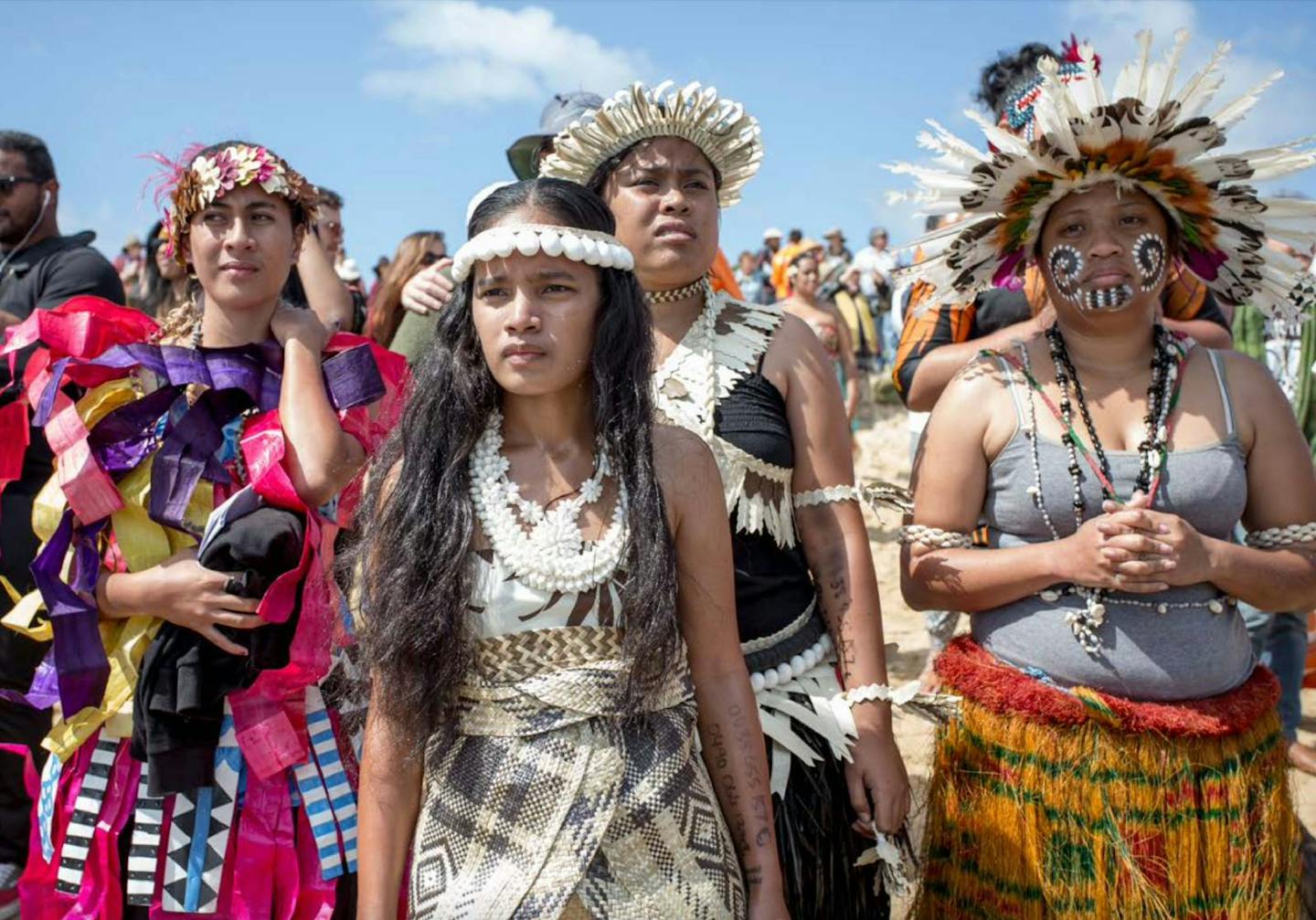Indigenous leaders call for independent funding mechanism to support climate and biodiversity action
A large caucus representing the World’s Indigenous Peoples at the 27th UN Framework Convention on Climate Change released a groundbreaking paper calling for the establishment of a new permanent and independent Indigenous-led global funding mechanism to support efforts for “protecting all life” by enhancing biodiversity conservation, effectively responding to the impacts of climate change, and halting of desertification.
The paper is entitled Principles and Guidelines for Direct Access Funding for Indigenous Peoples’ Climate Action, Biodiversity Conservation, and Fighting Desertification for a Sustainable Planet (PDF). It carefully lays out the history of Indigenous Peoples’ participation in the three Rio Conventions and the lack of historic funding to date, the rationale behind a new funding mechanism and its 10 underlying principles, along with a proposed governance and indicators framework.
The Indigenous Peoples’ constituency behind the paper is organized in the International Indigenous Peoples’ Forum on Climate Change (IIPFCC), which serves as a platform for developing common positions and statements amongst Indigenous Peoples and for undertaking effective lobbying and advocacy work at UNFCCC meetings and negotiation sessions.
Why is this paper so timely and important?
An earlier paper, A Global Safety Net to reverse biodiversity loss and stabilize the Earth’s climate (2020), finds that of the remaining 50.4% of land that is in a suitable condition to support biodiversity, 37% is under Indigenous territorial governance [1]. And these areas, by and large, are better ecologically conserved than traditional government-run protected areas [2]. Tragically, according to a new study, less than 1% of funding reaches Indigenous Peoples to secure tenure rights and manage forests in tropical countries [3].
While there have been many pledges made recently to scale funding for Indigenous territories, these generally have remained within a paradigm where Indigenous peoples are treated as passive beneficiaries and governance is outsourced to non-Indigenous organizations and institutions, many of which are headquartered in the Global North. Even if the principle of Free, Prior, and Informed Consent is followed during project development, the involvement of multiple intermediaries can mean that Indigenous self-determination gets lost along the way.
The new approach presented by Indigenous caucus at COP27 flips the script, allowing tribal and Indigenous peoples governments to take the lead:
This approach respects and upholds the principles of the UN Declaration on the Rights of Indigenous Peoples and the UN Permanent Forum on Indigenous Issues (UNPFII), which has stated that funding for Indigenous Peoples should strengthen the exercise of their right to self-determination, including their ability to own, use and manage their lands, territories, and resources.

The facility would support a wide array of activities on tribal territories, supporting everything from renewable energy access to traditional livelihoods. Photos courtesy of RECREC (upper) and Valery Spidlen (lower).
Through the funding mechanism, a wide and diverse array of activities could be supported across 4 major categories:
- Strengthening land tenure and land rights
- Maximizing investments, including debt-for-nature swaps
- Covering costs associated with loss and damages
- Improving sustainable lifeways, livelihoods, and practices
There are 10 guiding principles outlined in designing a new Indigenous-led global funding mechanism:
- Projects developed by Indigenous Peoples should be prioritized over those submitted by intermediaries
- Consistency in the promotion, respect, and application of the agreed principles for Indigenous Peoples’ self-determined development
- Support areas/interventions informed by Self-determination of Indigenous Peoples
- Full and effective leadership, including through FPIC & Community protocols, to support ownership by Indigenous Peoples
- Clear and supported Safeguards against adverse impacts of interventions in Indigenous Peoples’ territories
- Non-discrimination & Inclusivity of Indigenous Peoples’ community groups, lifeways, livelihoods & landscapes
- Transparency regarding the source of the funding
- Respect for Indigenous People’s cultures and languages
- Partnership and effective collaboration between Indigenous Peoples and financial partners
- Zero or minimal Intermediaries and institutional layering to ensure efficiency in decision-making and reporting
The paper also proposes 17 short-term and long-term indicators to measure and track impacts and success.
Read the full paper-
-
[1] Dinerstein et al. "A Global Safety Net to reverse biodiversity loss and stabilize the Earth's climate." Science Advances, 2020
[2] Sze et al. "Indigenous lands in protected areas have high forest integrity across the tropics." Current Biology, 2022
[3] Dwyer. "Indigenous communities receive less than 1% of climate mitigation aid." Global Landscape Forum, 2021
-




